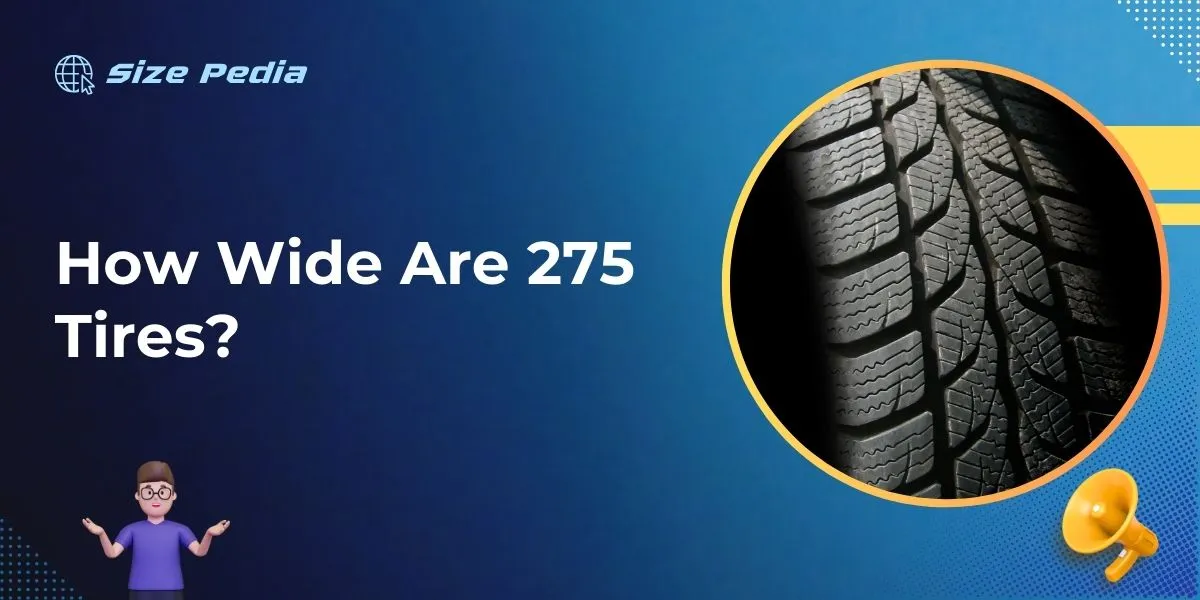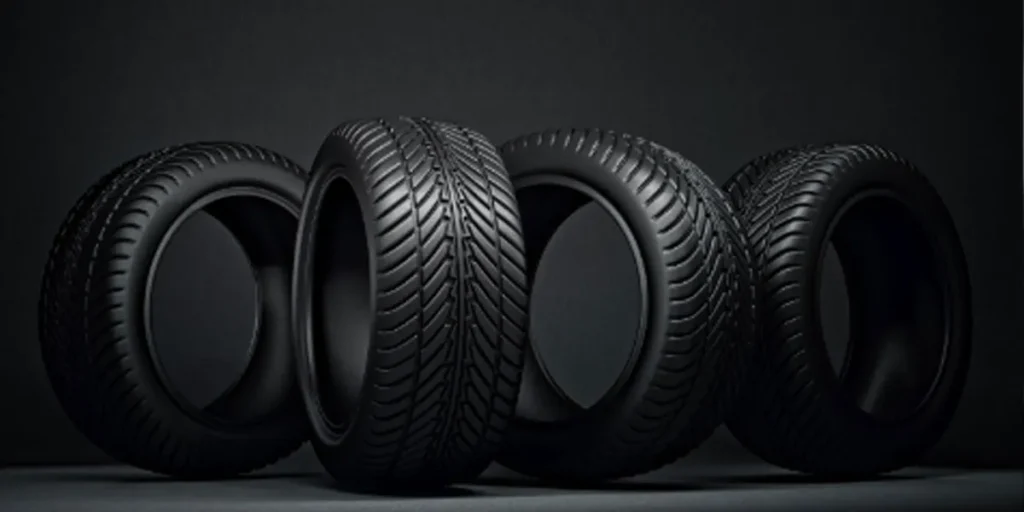275 tires are typically 275 mm wide, translating to about 10.8 inches. The width of tires marked “275” refers to the tire’s section width from sidewall to sidewall.
Selecting the correct tire size for your vehicle is crucial for both safety and performance.
Tire width, indicated by the first number in a tire’s size designation, directly affects grip, handling, and vehicle aesthetics.
For example, a 275-width tire is a common choice among drivers looking for a balance between performance and versatility.
It’s substantial enough to provide a strong road presence and improved handling characteristics due to a larger contact patch with the road surface.
Additionally, the selection of a tire must align with the manufacturer’s specifications to ensure proper fitment and avoid potential issues with clearance or odometer accuracy.
Understanding tire sizing is an essential part of vehicle maintenance and customization—choosing a 275 mm wide tire can offer a significant enhancement to your driving experience.

Decoding Tire Numbers
Understanding tire size seems tricky but is actually straightforward.
Each number and letter on a tire’s sidewall provides crucial information.
Meaning Of ‘275’ In Tire Size
The ‘275’ part of a tire size is a width measurement.
This number indicates the width of the tire in millimeters from sidewall to sidewall.
Hence, a 275 tire measures 275 millimeters or about 10.8 inches across. It’s the initial touchpoint for determining if a tire will fit your vehicle.
The Three-number Tire Code
Most tire sizes are displayed in a three-number sequence. Consider the common size ‘275/55R20’:
- ‘275’ tire width in millimeters.
- ’55’ aspect ratio, sidewall height percentage of the width.
- ‘R20’ wheel diameter in inches that the tire fits.
Together, these numbers paint a complete picture of the tire’s dimensions.
By understanding this code, you can make informed decisions for your vehicle’s tires, ensuring a safe and compatible fit.
| Measurement | Explanation |
|---|---|
| Width (275) | Width of tire in millimeters |
| Aspect Ratio (55) | Sidewall height as a percentage of width |
| Diameter (R20) | Wheel diameter in inches for the tire |
Select tires best suited for your vehicle by looking beyond width.
Consider all elements including usage, load rating, and speed rating. Always consult with a professional when in doubt.
Selecting tires with precision provides better safety, performance, and overall driving satisfaction.
Comparing 275 Tires To Other Sizes

When talking about tire sizes, the number 275 refers to the tire width in millimeters from sidewall to sidewall.
Understanding the width of 275 tires is essential for vehicle owners considering new tires.
Differences With Wider Tire Options
Wider tires, such as 285 or 295, provide a different experience. See the distinctions below:
| Width | Grip | Fuel Economy | Ride Comfort |
|---|---|---|---|
| 275 | Better than narrower tires | Lower than narrower, higher than wider | Balanced |
| 285+ | Improved due to larger contact area | Improved due to a larger contact area | May be softer depending on tire makeup |
Compatibility Considerations
Understanding the correct tire size for a vehicle is vital for safety and performance.
275 tires refer to the width of the tire in millimeters.
But there’s more to it than just choosing any 275 tire; it must match the car’s rim size, and the vehicle type needs to be suitable.
Matching Tires To Rim Width
The width of the tire must align with the rim’s width for optimal performance. A mismatch can lead to tire damage or an unsafe driving experience.
The table below shows the ideal rim width range for 275 tires:
| Tire Width (mm) | Minimum Rim Width (inches) | Maximum Rim Width (inches) |
|---|---|---|
| 275 | 9.0 | 11.0 |
For a tire that’s 275 mm wide, wheel rims should be between 9 and 11 inches wide.
This ensures a snug fit and keeps the tire seated correctly on the rim.
Measuring Tire Width Accurately
Know your tire size like a pro. When talking about tire sizes, such as 275, precision is key.
This number refers to the tire’s width in millimeters. But to truly understand the size, accurate measurement is critical.
Tools And Techniques
Start with the right tools. You will need a caliper for precise measurements. A tape measure can work too. Follow these steps:
- Position the tire upright and accessible.
- Measure across the tread from one sidewall to the other.
- Record the width in millimeters for accuracy.
Always measure the widest point. This is typically found at the outer edges of the sidewalls.
Common Misconceptions In Measurements
Mistakes are common when measuring tire width. Remember these tips:
- The numbers on the tire are not always precise.
- Measurements can vary due to tire wear and usage.
- Do not confuse tire width with rim width.
Using the aforementioned techniques ensures your ‘275’ tire measures up to its name. Correct tire data equals safer, more informed driving.
Maintenance Tips For Optimal Width Preservation

Maintenance Tips for Optimal Width Preservation are crucial to keep your 275 tires in peak condition.
Tires are not just about traction; their width also plays a vital role in the performance and safety of your vehicle.
By following some straightforward maintenance tips, you can ensure that your tires retain their optimal width and continue to serve you well on the road.
Regular Inspections And Care
To maintain your 275 tires, it all starts with regular inspections. Keep an eye out for any signs of uneven wear or damage.
This could mean a loss of width and, therefore, grip.
By catching these issues early, you can take steps to address them before they worsen.
- Check tire surfaces for cuts or bulges.
- Rotate tires as per the manufacturer’s recommendation.
- Align wheels to prevent uneven wear.
Proper Inflation And Its Effects
Another key aspect is proper inflation.
Tires at the right pressure perform better, last longer, and maintain width effectively.
Under-inflated tires can lead to sidewall flexing, which affects width and performance.
| Pressure Check Frequency | Benefits |
|---|---|
| Monthly | Maintains optimal width |
| Before long trips | Ensures safety and performance |
| Seasonal changes | Adjusts for temperature effects |
Use a reliable tire gauge to check pressure regularly.
Refer to your vehicle’s manual for the correct PSI and remember that weather can impact tire pressure.
Keeping tires properly inflated not only preserves their width but also boosts overall vehicle efficiency.
Frequently Asked Questions On How Wide Are 275 Tires
What Does The 275 Mean On A Tire?
The “275” on a tire refers to the tire’s width in millimeters from sidewall to sidewall.
How Wide Is A 285 Tire?
A 285 tire is approximately 285mm (11. 22 inches) wide, which refers to the tire’s cross-sectional width.
How Much Wider Is A 275 Tire Than A 265?
A 275 tire is 10mm wider than a 265 tire.
How Wide Is A 275 40 Tire?
A 275 40 tire is approximately 275 mm or 10. 8 inches wide. This measurement refers to the tire’s cross-sectional width.
Conclusion
Understanding the dimensions of 275 tires is essential for vehicle owners aiming for the perfect fit.
With their width averaging about 10. 8 inches, these tires offer a balance between grip and performance.
Choosing the right tires will ensure a smoother ride and enhanced handling.
Always remember to verify compatibility with your specific car model for optimal results.
Resources:
https://www.epa.gov/verified-diesel-tech/tire-size-guidance-smartway-verification
https://www.thompsontoyota.com/difference-between-265-and-275-tires/
